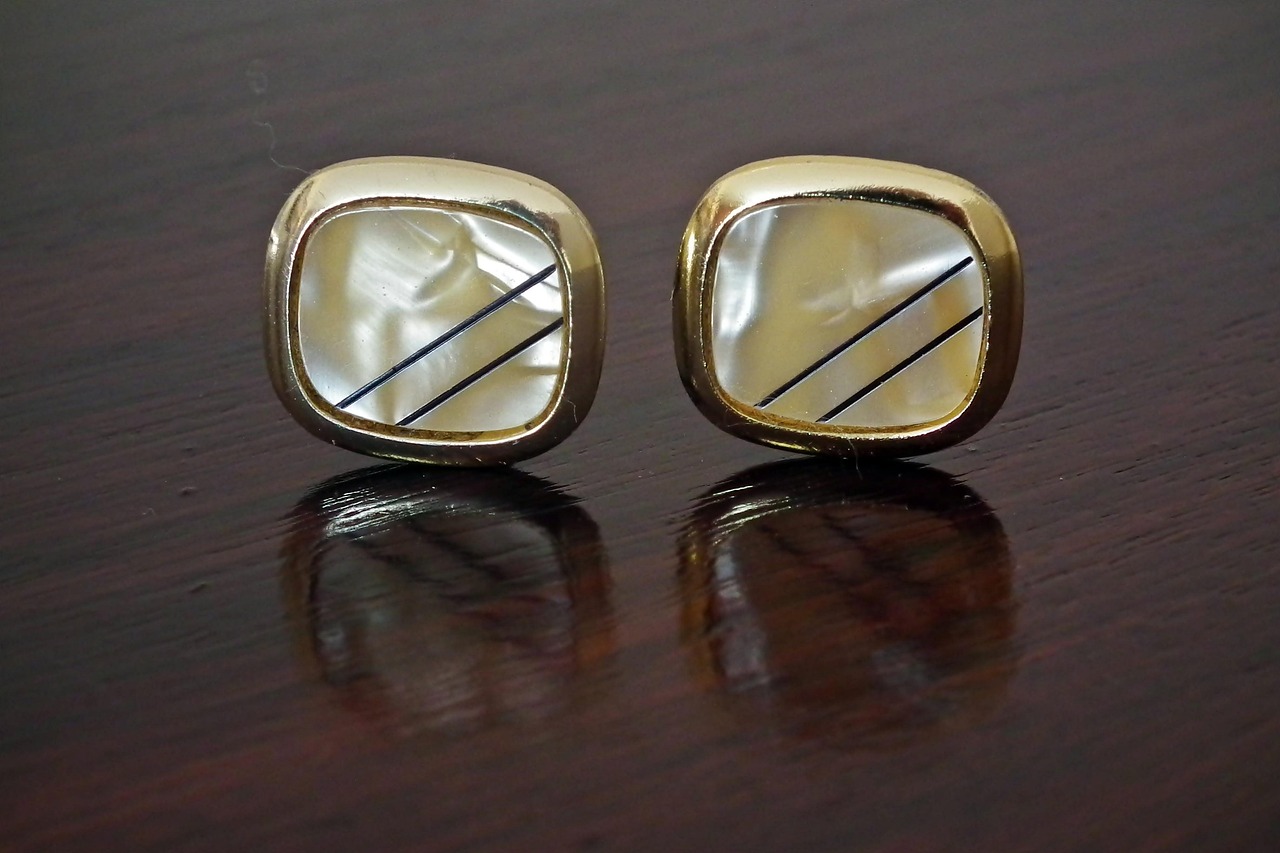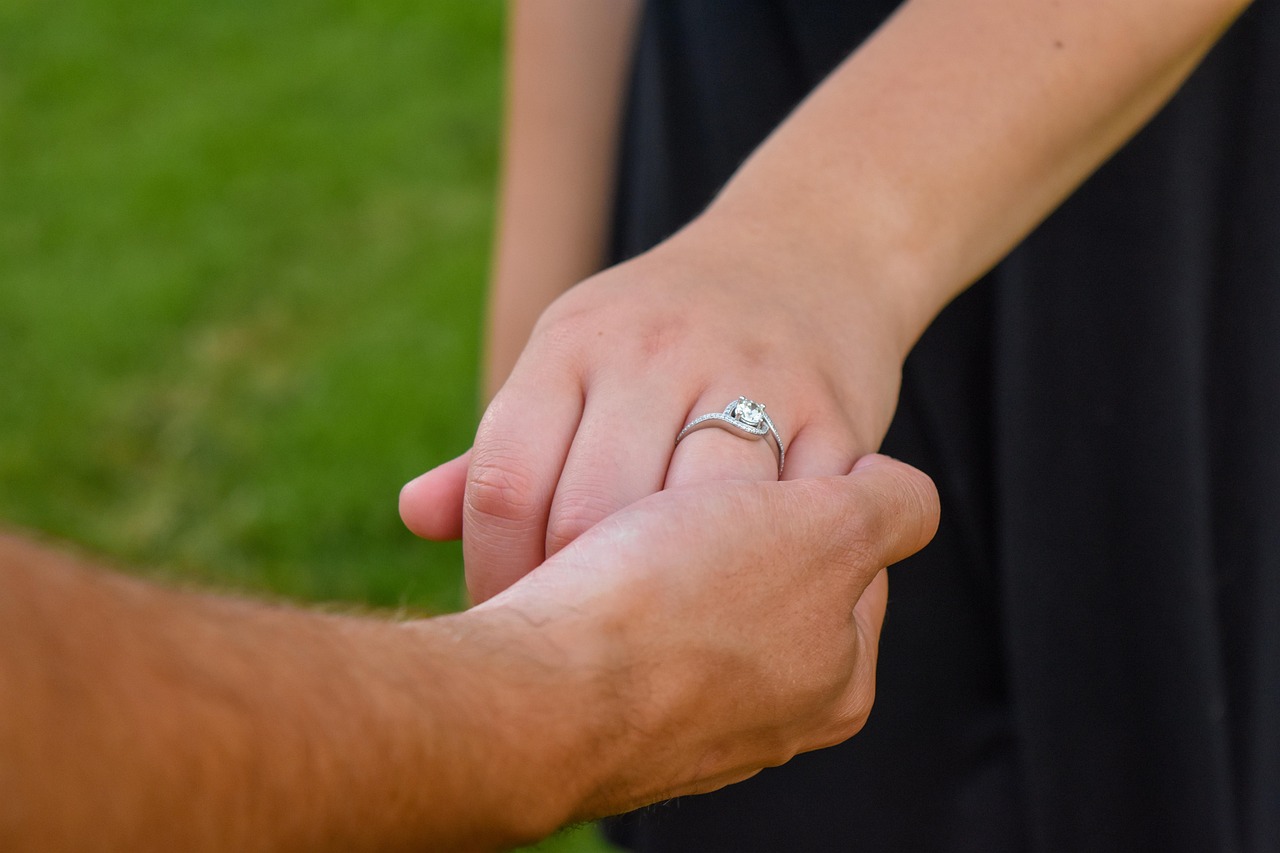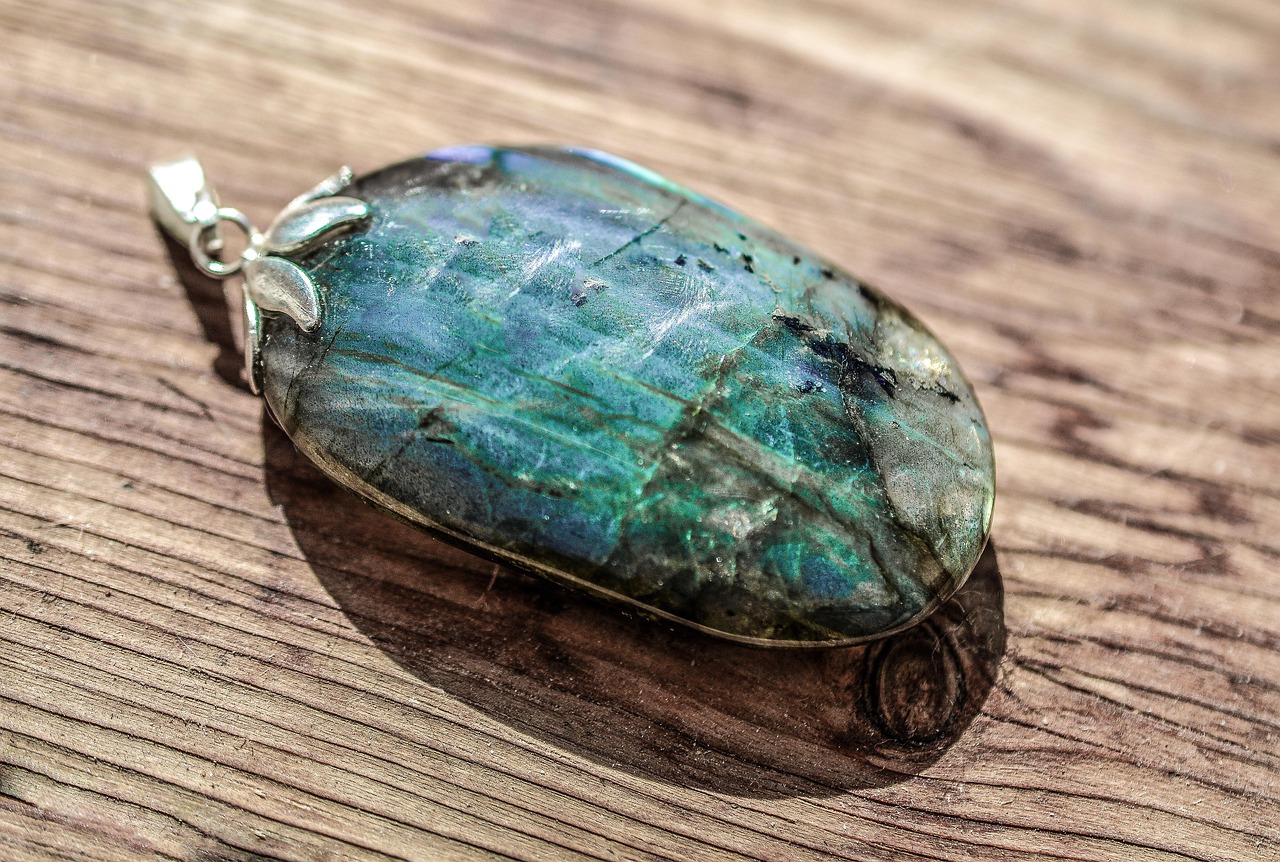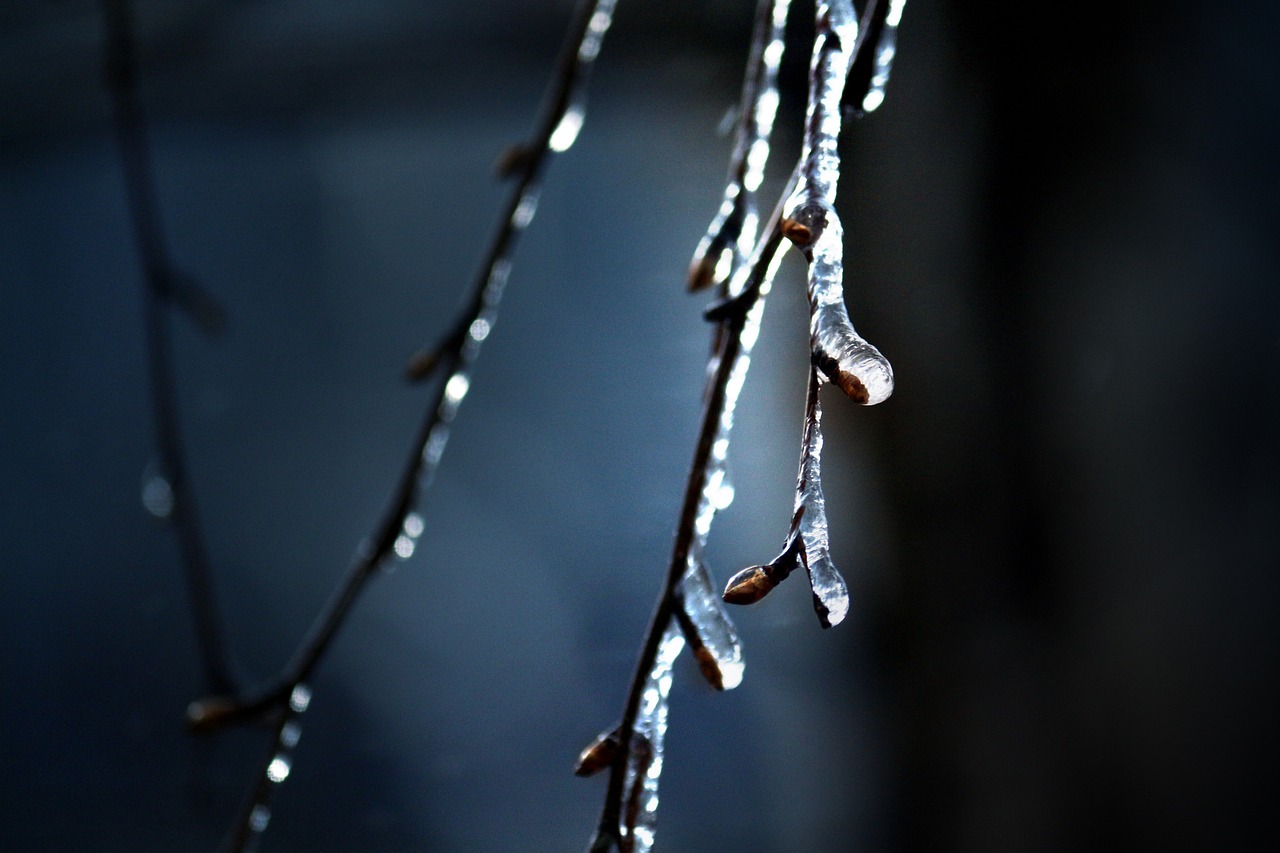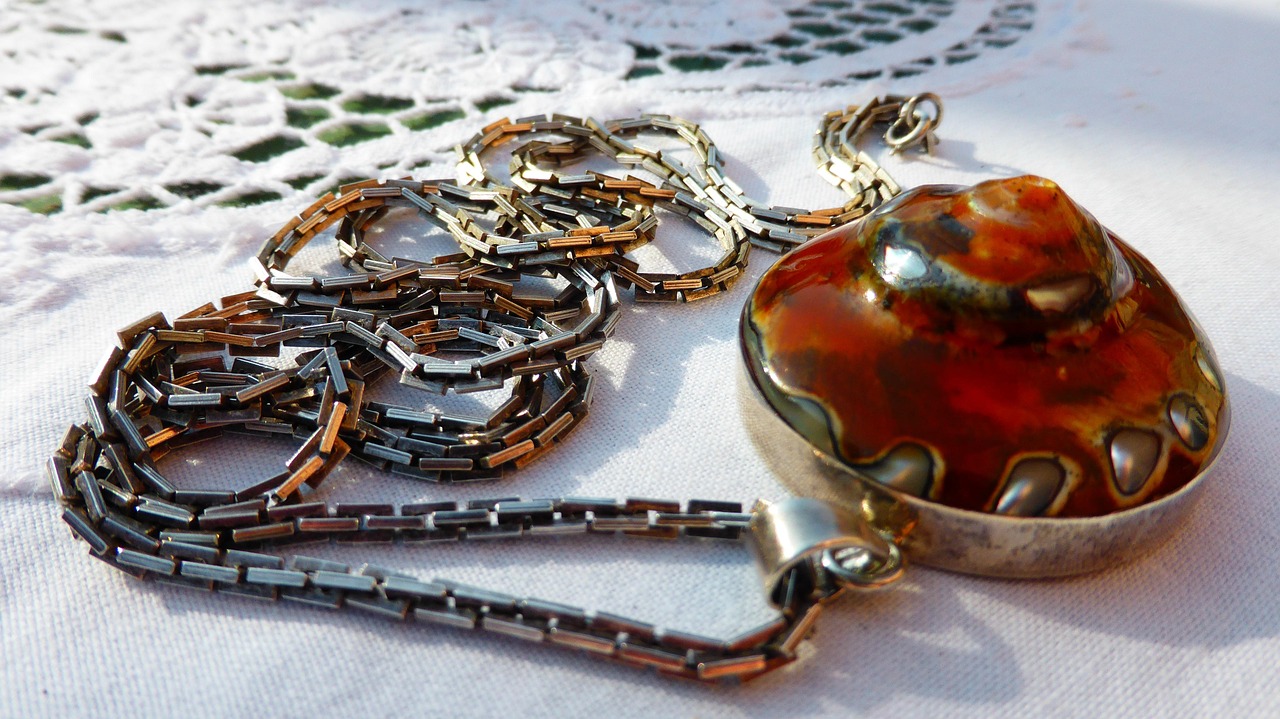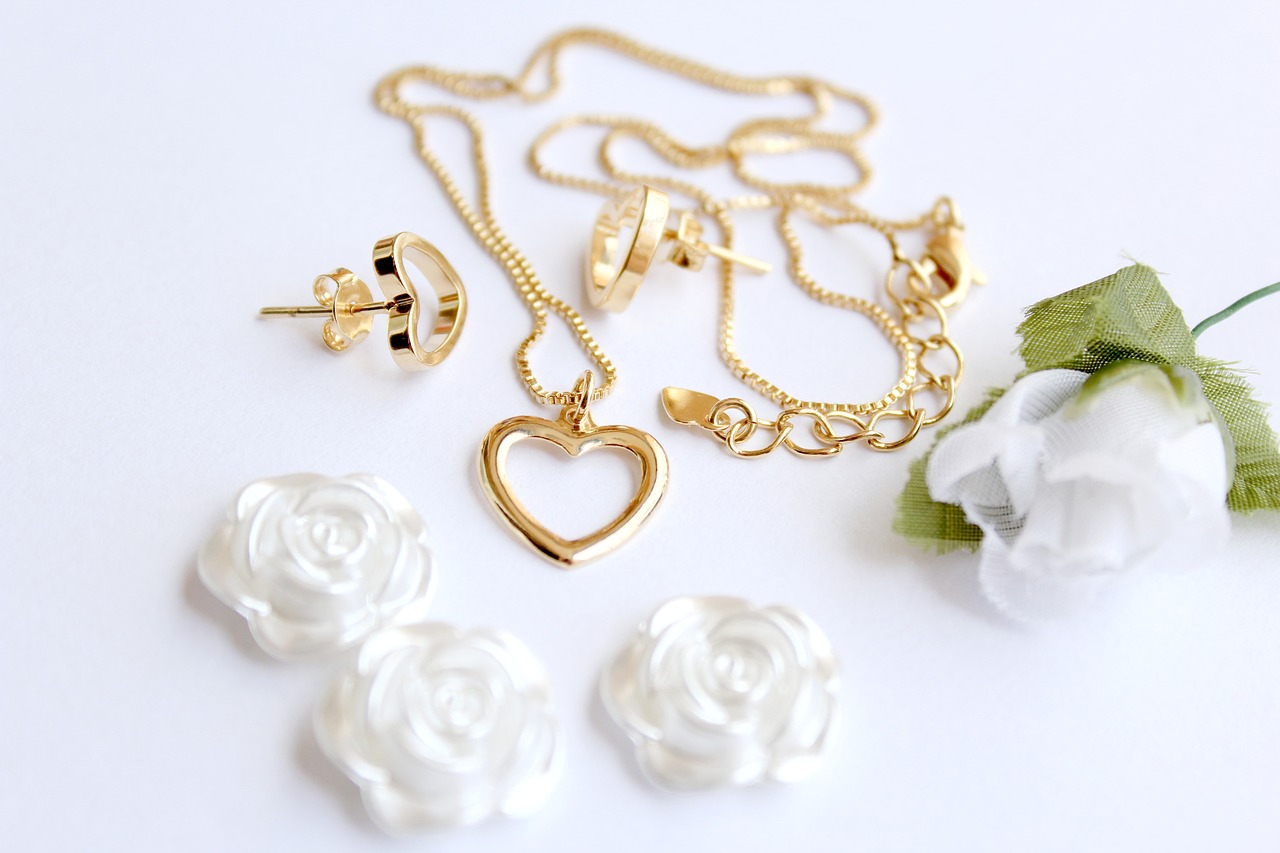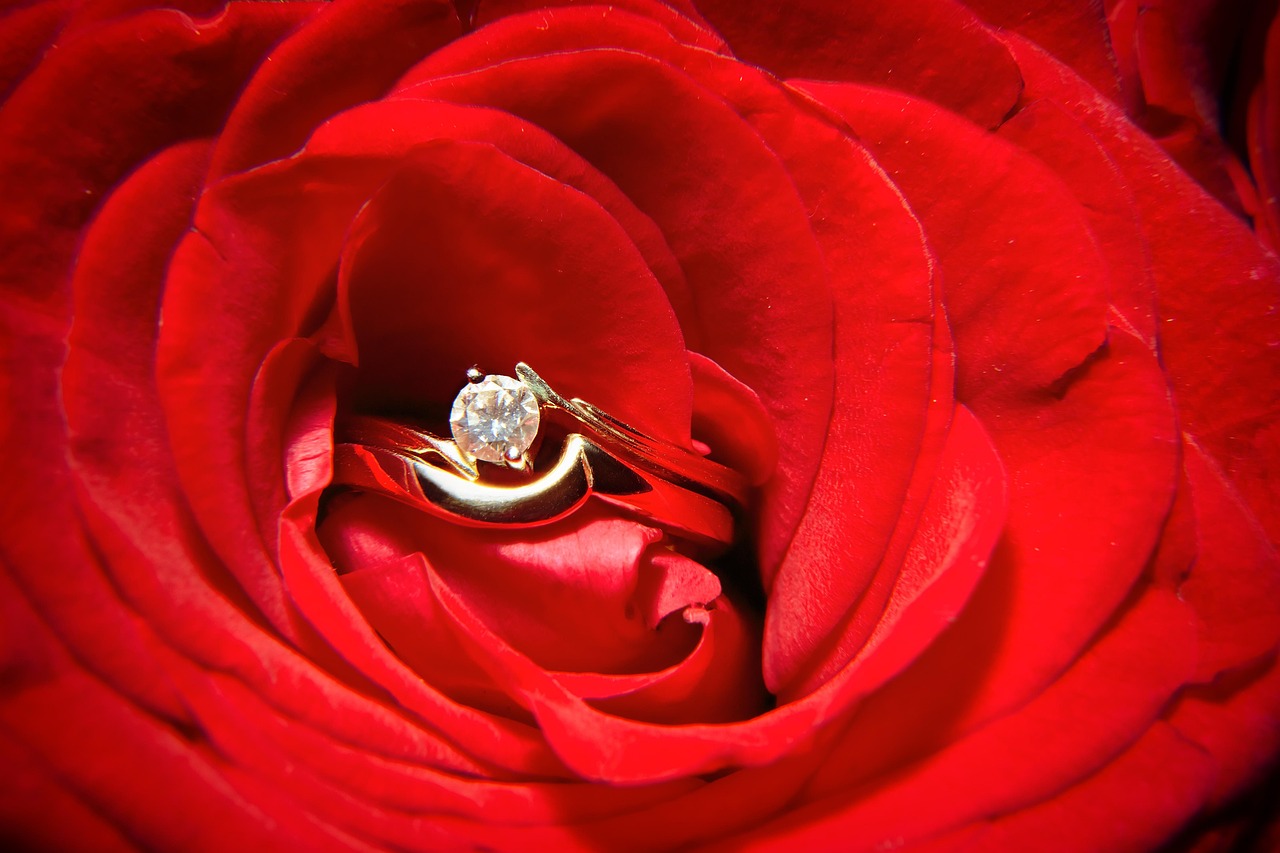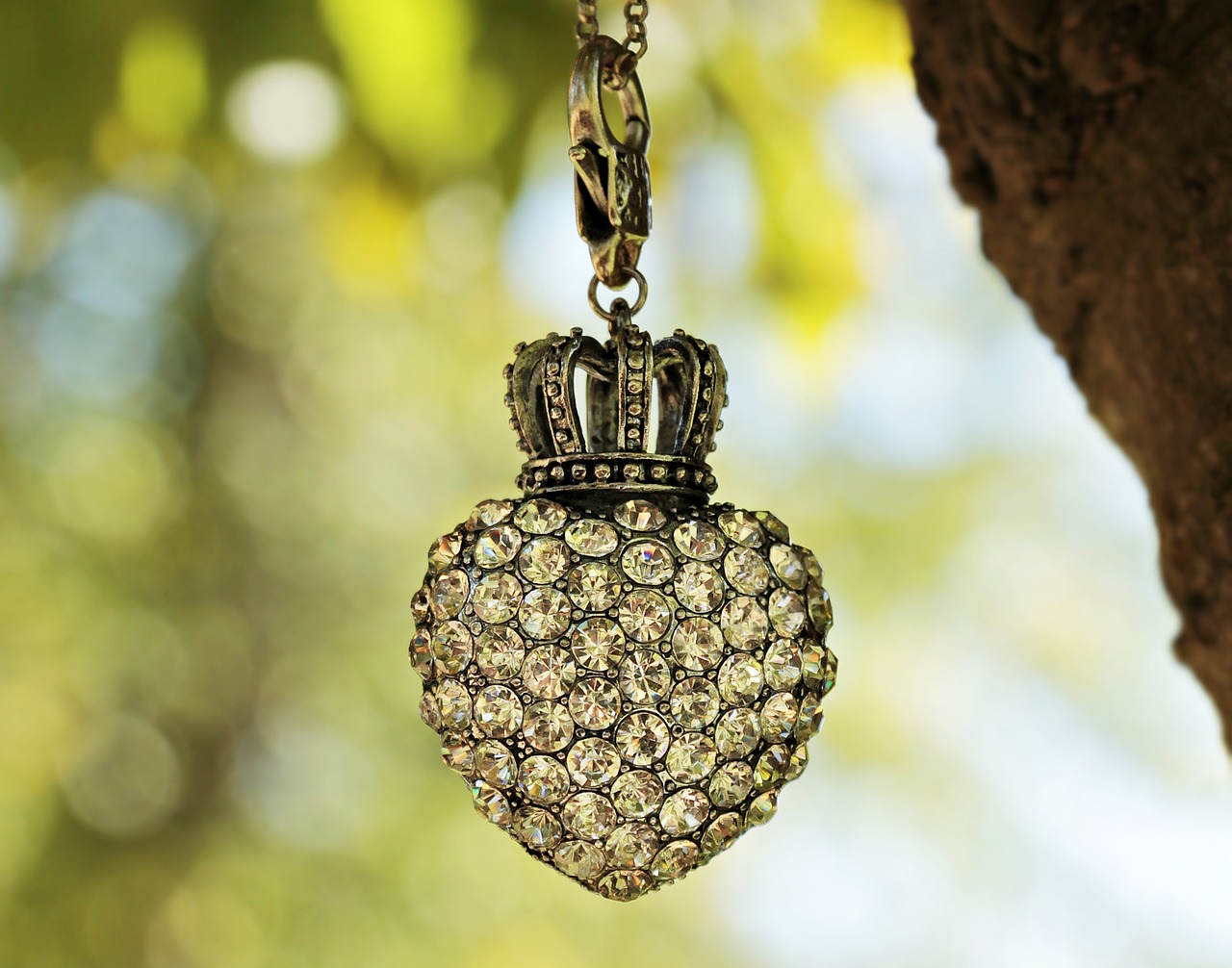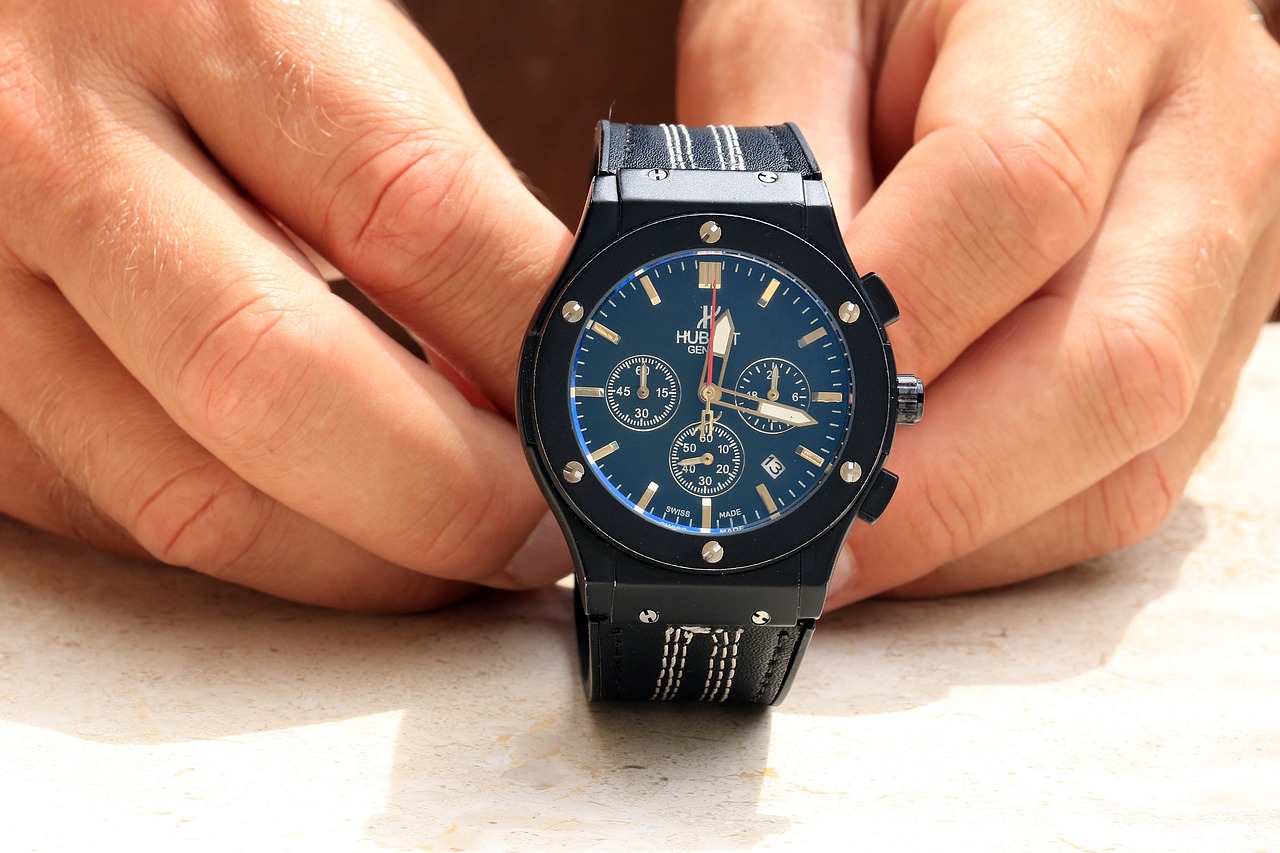This article explores the essential steps and considerations for designing a custom engagement ring, ensuring it reflects your unique love story and meets your partner’s preferences.
What Are the Key Elements of a Custom Engagement Ring?
Understanding the core components of a custom engagement ring is crucial. The main elements include the setting, metal type, and the choice of gemstones. Each of these factors contributes significantly to the ring’s overall aesthetic and emotional value.
How to Choose the Right Metal for Your Ring?
Selecting the appropriate metal is vital for both durability and style. Popular choices include:
- White Gold: Known for its modern look and durability.
- Yellow Gold: A classic choice that symbolizes tradition.
- Rose Gold: Offers a romantic and vintage feel.
- Platinum: Renowned for its strength and hypoallergenic properties.
What Are the Benefits of White Gold?
White gold is a popular choice for its sleek appearance and resilience. It is an alloy that combines gold with other metals, providing a brilliant shine while being resistant to tarnishing.
How Does Rhodium Plating Enhance White Gold?
Rhodium plating adds a reflective finish to white gold, enhancing its brilliance. However, this plating may require periodic reapplication to maintain its luster and protect the underlying gold.
What Should You Know About Care for White Gold Rings?
Caring for white gold involves regular cleaning and avoiding harsh chemicals to prevent damage to the rhodium plating and maintain its shine.
Why Choose Yellow Gold for Your Engagement Ring?
Yellow gold is a classic choice that symbolizes tradition and warmth. Its rich hue complements various skin tones and can be a timeless option for many couples.
How to Select the Perfect Gemstone?
Choosing the right gemstone is a personal decision that significantly impacts the ring’s beauty. While diamonds are traditional, colored gemstones can add a unique touch reflecting personal significance.
What Are the 4 Cs of Diamonds?
Understanding the 4 Cs—cut, color, clarity, and carat weight—helps in selecting a diamond that meets quality standards while fitting within your budget and aesthetic preferences.
How Do Colored Gemstones Compare to Diamonds?
Colored gemstones offer a unique alternative to diamonds, allowing for personalized choices. Each gemstone has its own symbolism and characteristics, making them special for custom designs.
What Ring Styles Should You Consider?
The style of the engagement ring can range from vintage to modern. Each style conveys different meanings and can be tailored to suit personal tastes and lifestyles.
What Defines a Vintage Engagement Ring?
Vintage engagement rings often feature intricate designs and unique settings, reflecting the artistry of the era they represent. These rings can be a beautiful nod to history and tradition.
How Does a Modern Ring Differ from Traditional Designs?
Modern engagement rings typically embrace minimalism and clean lines, offering a contemporary twist on classic styles. They often incorporate unique settings and innovative designs to stand out.
How to Customize Your Ring Design?
Customizing a ring involves collaboration with a jeweler to create a design that embodies your vision. This process includes sketching, selecting materials, and finalizing details to ensure satisfaction.
What Role Does a Jeweler Play in Custom Design?
A skilled jeweler serves as a guide, helping you navigate choices and offering expertise in materials and design elements, ensuring the final product aligns with your vision.
How Can You Incorporate Personal Touches into the Design?
Adding personal touches, such as engravings or unique settings, can make the ring truly one-of-a-kind. These elements can symbolize your relationship and enhance its sentimental value.
What Are the Costs Associated with Custom Engagement Rings?
Understanding the costs involved in designing a custom engagement ring helps manage expectations and budget effectively. Factors influencing price include materials, design complexity, and labor.
How Can You Budget for a Custom Ring?
Budgeting for a custom ring involves considering all aspects of the design process, from materials to craftsmanship. Setting a clear budget helps narrow down choices and avoid overspending.
What Are Common Mistakes to Avoid When Designing a Ring?
Being aware of common pitfalls, such as rushing decisions or neglecting comfort, can enhance the design process. Taking time to consider all aspects ensures a thoughtful and meaningful result.
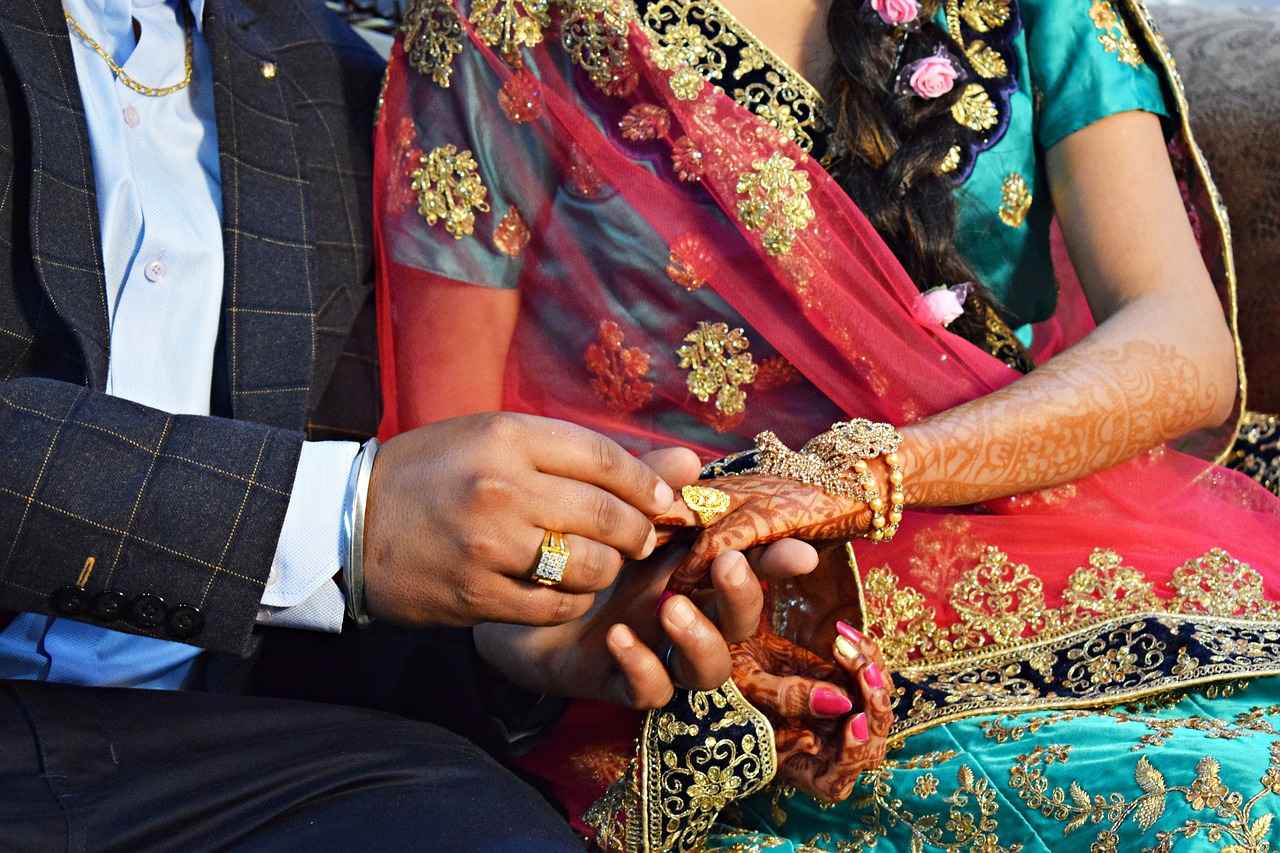
What Are the Key Elements of a Custom Engagement Ring?
Designing a custom engagement ring is an exciting journey that allows couples to express their unique love story through a piece of jewelry. Understanding the core components of a custom engagement ring is crucial to creating a piece that resonates with personal style and sentiment. This includes the setting, metal type, and choice of gemstones, each contributing significantly to the ring’s overall aesthetic and emotional value.
The key elements of a custom engagement ring can be broken down into three primary components:
- Setting: The setting is the way the gemstone is mounted on the band. It not only affects the ring’s appearance but also its security and durability. Popular settings include solitaire, halo, and three-stone designs, each offering a distinct look and feel.
- Metal Type: The choice of metal plays a vital role in both the ring’s durability and its visual appeal. Common options include white gold, yellow gold, rose gold, and platinum. Each metal has its unique characteristics, influencing the ring’s overall style and maintenance needs.
- Gemstones: While diamonds are the traditional choice for engagement rings, colored gemstones like sapphires, emeralds, and rubies are gaining popularity. The choice of gemstone can reflect personal significance and add a unique touch to the design.
The setting not only showcases the gemstone but also influences how light interacts with it, enhancing its brilliance and sparkle. For instance, a solitaire setting emphasizes the beauty of a single stone, while a halo setting can make a diamond appear larger by surrounding it with smaller stones. Choosing the right setting is essential for both aesthetic appeal and practical considerations, such as ease of wear and maintenance.
When selecting the metal for your engagement ring, consider both durability and style. Each metal type has its pros and cons:
- White Gold: Known for its modern look, white gold is durable and resistant to tarnishing, making it a popular choice.
- Yellow Gold: A classic option that symbolizes tradition, yellow gold offers a warm hue that complements various skin tones.
- Rose Gold: With its romantic pinkish hue, rose gold has become increasingly popular, adding a vintage touch to modern designs.
- Platinum: The most durable option, platinum is hypoallergenic and maintains its luster over time, making it a premium choice.
Choosing the right gemstone is a deeply personal decision that can significantly impact the ring’s overall beauty. While diamonds remain the traditional choice, colored gemstones offer a unique alternative:
- Diamonds: Known for their brilliance and hardness, diamonds are graded based on the 4 Cs: cut, color, clarity, and carat weight. Understanding these factors can help in selecting a diamond that fits both quality standards and budget.
- Sapphires: Available in various colors, sapphires symbolize loyalty and nobility, making them a meaningful choice for engagement rings.
- Emeralds: With their rich green hue, emeralds represent rebirth and love, offering a stunning alternative to traditional diamonds.
- Rubies: Known for their vibrant red color, rubies symbolize passion and commitment, making them a bold choice for an engagement ring.
In conclusion, understanding the key elements of a custom engagement ring is essential for creating a piece that truly reflects your love story. By carefully considering the setting, metal type, and gemstone choices, you can design a ring that is not only beautiful but also meaningful.
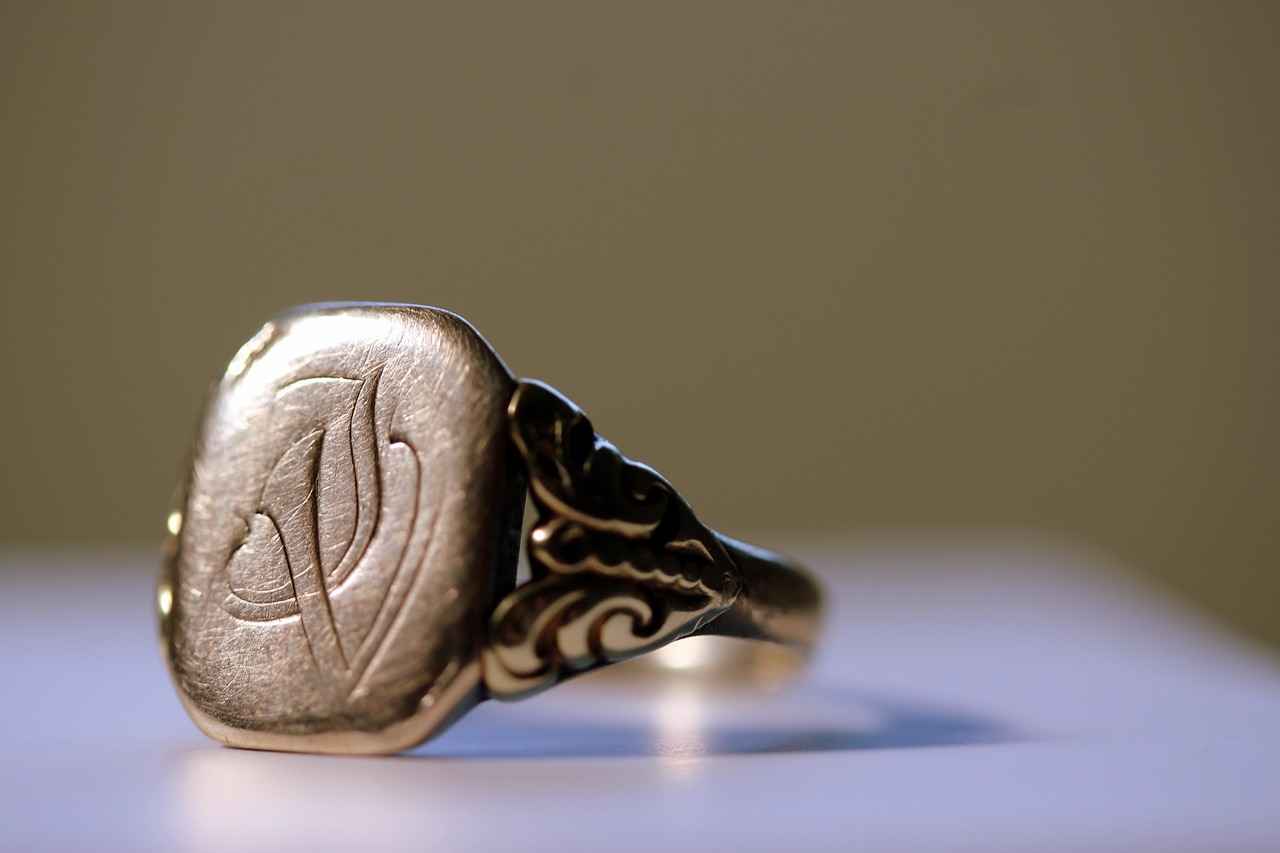
How to Choose the Right Metal for Your Ring?
When it comes to designing a custom engagement ring, one of the most critical decisions you’ll make is selecting the right metal. The metal not only affects the ring’s durability but also plays a significant role in its overall style. Understanding the characteristics of various metals can help you choose the perfect one that aligns with your partner’s taste and lifestyle.
The choice of metal can significantly influence the ring’s appearance and longevity. A well-selected metal will not only enhance the beauty of the ring but also ensure it withstands the test of time. Here are some popular options:
- White Gold: Known for its sleek and modern look, white gold is an alloy of gold mixed with metals like palladium or nickel. It offers a brilliant shine and is resistant to tarnishing, making it a popular choice for contemporary designs.
- Yellow Gold: A classic choice that symbolizes tradition, yellow gold brings warmth and richness to the ring. Its timeless appeal complements various skin tones and can be a beautiful representation of everlasting love.
- Rose Gold: This trendy option has gained popularity for its romantic hue. The blend of gold and copper gives rose gold its distinctive pinkish tone, making it an excellent choice for those who desire a unique and fashionable ring.
- Platinum: As one of the most durable metals, platinum is hypoallergenic and resistant to wear and tear. Its natural white luster does not fade over time, ensuring that your ring maintains its stunning appearance for years to come.
Each metal has its own set of advantages that can cater to different preferences and lifestyles:
| Metal Type | Advantages |
|---|---|
| White Gold | Modern look, durable, resistant to tarnish. |
| Yellow Gold | Classic appeal, complements various skin tones, symbolizes tradition. |
| Rose Gold | Unique color, trendy, romantic feel. |
| Platinum | Highly durable, hypoallergenic, maintains luster. |
When selecting the metal for your engagement ring, consider your partner’s lifestyle. For instance, if they lead an active life or work with their hands, a more durable metal like platinum or white gold may be ideal. Conversely, if they prefer a classic and timeless look, yellow gold could be the best fit.
Different metals require varying levels of maintenance. For example, white gold is often rhodium plated, which can wear off over time and may need reapplication. On the other hand, platinum is low-maintenance and retains its shine with minimal effort. Understanding these aspects can help you make an informed decision.
Ultimately, choosing the right metal for your engagement ring is a personal journey that reflects your partner’s style and values. By considering the advantages, lifestyle, and maintenance of each metal type, you can create a ring that is not only beautiful but also meaningful.
What Are the Benefits of White Gold?
White gold has become a favored choice for engagement rings and fine jewelry, appealing to many due to its elegant appearance and robust durability. As an alloy, white gold combines pure gold with other metals such as palladium, nickel, or silver. This combination not only enhances its strength but also gives it a stunning silvery-white hue that rivals platinum.
One of the primary reasons for the popularity of white gold is its modern aesthetic. The bright, shiny surface of white gold complements a variety of gemstones, making it an ideal setting for both traditional diamonds and colorful gemstones. Additionally, its versatile nature allows it to pair beautifully with any outfit, from casual wear to formal attire.
Unlike yellow gold, which can be softer and more susceptible to scratches, white gold is engineered for strength. The addition of metals like nickel increases its hardness, making it more resistant to wear and tear. This durability is particularly important for engagement rings, which are worn daily and need to withstand the rigors of everyday life.
To achieve its brilliant shine, white gold is often rhodium plated. Rhodium, a member of the platinum family, is applied as a thin layer over the white gold to enhance its reflective properties. This plating not only boosts the ring’s luster but also adds an extra layer of protection against scratches and tarnishing. However, it is important to note that rhodium plating can wear off over time, and periodic reapplication may be necessary to maintain the ring’s original shine.
Maintaining the beauty of white gold requires some attention. Regular cleaning is essential to remove dirt and oils that can dull the surface. A gentle solution of warm water and mild soap is usually sufficient. Additionally, avoiding exposure to harsh chemicals, such as bleach or chlorine, can help preserve the integrity of both the white gold and the rhodium plating.
When choosing a metal for an engagement ring, many people compare white gold to alternatives like platinum and yellow gold. While platinum is more durable and hypoallergenic, it is also significantly more expensive. Yellow gold, on the other hand, offers a classic look but may not provide the same level of scratch resistance as white gold. Each metal has its own unique properties, making it essential to consider personal preferences and lifestyle when making a choice.
One potential drawback of white gold is that it often contains nickel, which can cause allergic reactions in some individuals. If you or your partner have a known sensitivity to nickel, it may be wise to opt for a nickel-free alloy or consider alternatives like platinum or palladium.
The cost of white gold jewelry can vary significantly based on several factors, including the current market price of gold, the amount of alloy used, and the complexity of the design. Generally, white gold is more affordable than platinum but may be priced similarly to yellow gold. When budgeting for a custom engagement ring, it’s essential to factor in these variables to ensure you find a piece that fits your financial plan.
In summary, white gold is a stunning and durable choice for engagement rings, offering a modern aesthetic that appeals to many. With proper care and consideration of personal preferences, a white gold ring can be a lasting symbol of love and commitment.
How Does Rhodium Plating Enhance White Gold?
Rhodium plating is a popular finishing technique used in the jewelry industry, especially for white gold engagement rings. This process involves applying a thin layer of rhodium, a precious metal in the platinum family, onto the surface of the white gold. The result is a stunning, reflective finish that significantly enhances the ring’s overall appearance. Below, we explore how rhodium plating elevates white gold and the considerations that come with it.
- Enhanced Brilliance: Rhodium plating provides a brilliant, mirror-like finish that makes white gold rings shine remarkably. This reflective quality is particularly appealing for engagement rings, as it highlights the beauty of the center stone.
- Tarnish Resistance: One of the main advantages of rhodium is its resistance to tarnishing and scratching. This protective layer helps maintain the ring’s appearance over time, making it a practical choice for everyday wear.
- Hypoallergenic Properties: Rhodium is hypoallergenic, making it suitable for individuals with sensitive skin. This feature ensures that those who wear rhodium-plated jewelry can enjoy their pieces without irritation.
While rhodium plating offers numerous benefits, it is important to note that it is not permanent. Over time, especially with regular wear, the plating can wear off, revealing the white gold beneath. The longevity of the plating can be influenced by factors such as:
- Frequency of Wear: Rings worn daily may require more frequent reapplication of rhodium plating compared to those worn occasionally.
- Exposure to Chemicals: Harsh chemicals found in cleaning products, lotions, and perfumes can accelerate the wear of the plating.
- Care and Maintenance: Proper care, including regular cleaning and avoiding rough activities, can help prolong the life of the rhodium layer.
To maintain the ring’s luster, it is advisable to have the rhodium plating reapplied every 1 to 3 years, depending on the factors mentioned above. Regular inspections by a jeweler can help determine when reapplication is necessary. This process is relatively simple and can restore the ring’s original shine, ensuring it continues to reflect your love story beautifully.
To keep your rhodium-plated white gold ring looking its best, consider the following care tips:
- Regular Cleaning: Clean your ring with a soft cloth and mild soap to remove dirt and oils. Avoid harsh chemicals that could damage the rhodium layer.
- Store Properly: When not wearing your ring, store it in a soft pouch or lined jewelry box to prevent scratches.
- Avoid Contact: Remove your ring when using cleaning products or engaging in activities that may expose it to harsh conditions.
In summary, rhodium plating significantly enhances the visual appeal of white gold engagement rings, providing a lustrous finish that many couples desire. While the plating does require maintenance, the benefits it offers in terms of brilliance and durability make it a worthwhile consideration for those looking to create a stunning piece of jewelry. By understanding the care and reapplication needs, you can ensure that your ring remains a beautiful symbol of your love for years to come.
What Should You Know About Care for White Gold Rings?
When it comes to caring for white gold rings, understanding the right maintenance practices is essential to preserve their beauty and longevity. White gold is a popular choice for engagement and wedding rings due to its stunning appearance and durability. However, it requires specific care to maintain its shine and protect the rhodium plating that enhances its brilliance.
To keep your white gold ring looking its best, regular cleaning is crucial. You can easily clean your ring at home using a gentle soap solution. Here’s a simple method:
- Mix a few drops of mild dish soap with warm water.
- Soak your ring in the solution for about 20-30 minutes.
- Use a soft toothbrush to gently scrub the ring, focusing on any crevices.
- Rinse thoroughly with warm water and dry with a soft, lint-free cloth.
This routine should be done every few weeks, depending on how often you wear the ring.
One of the most important aspects of caring for white gold rings is to avoid harsh chemicals. Substances like bleach, chlorine, and even some cleaning products can damage the rhodium plating. When engaging in activities that involve chemicals, such as cleaning or swimming in chlorinated pools, it’s best to remove your ring to prevent any potential harm.
In addition to your at-home cleaning routine, consider taking your ring to a professional jeweler for a deep clean and inspection at least once a year. Jewelers have the tools and expertise to clean your ring thoroughly and check for any signs of wear, ensuring that the rhodium plating remains intact.
When you’re not wearing your white gold ring, proper storage is essential to prevent scratches and tarnishing. Store your ring in a soft pouch or a dedicated jewelry box lined with fabric. Avoid placing it in direct contact with other jewelry pieces, as this can lead to scratches and damage.
Rhodium plating not only enhances the shine of white gold but also provides a protective layer. However, over time, this plating can wear away, especially with daily wear. If you notice that your ring has lost its luster or shows signs of yellowing, it may be time to have it replated. Most jewelers offer rhodium plating services to restore your ring’s original shine.
If your ring has any loose stones, visible damage, or if you’re unsure about its condition, it’s important to consult a professional jeweler. They can assess the situation and recommend the best course of action to ensure your ring remains beautiful and intact.
By following these care tips, you can maintain the stunning appearance of your white gold ring for years to come. Remember that a little maintenance goes a long way in preserving the beauty of this precious jewelry piece.
Why Choose Yellow Gold for Your Engagement Ring?
When it comes to selecting the perfect engagement ring, the choice of metal plays a significant role in both aesthetics and symbolism. Yellow gold, a classic option, has stood the test of time, embodying a sense of tradition and warmth that resonates with many couples. Its rich, golden hue not only complements a variety of skin tones but also evokes feelings of love and commitment.
Yellow gold is often associated with luxury and elegance. Its warm tones can enhance the beauty of any gemstone, making it an ideal choice for engagement rings. This metal is particularly favored for its ability to age gracefully, developing a unique patina over time that adds character to the ring.
One of the standout features of yellow gold is its versatility. It tends to look flattering on various skin tones, from fair to deep complexions. The warm undertones of yellow gold can create a beautiful contrast against cooler skin tones, while providing a harmonious look for warmer complexions. This adaptability makes it a popular choice among couples looking for a ring that will suit their personal styles.
- Durability: Yellow gold is a durable metal, making it suitable for everyday wear.
- Hypoallergenic: Pure yellow gold is less likely to cause allergic reactions, making it a safe choice for sensitive skin.
- Classic Appeal: Its timeless nature ensures that yellow gold rings will never go out of style.
- Versatile Design: Yellow gold can be easily incorporated into various ring styles, from vintage to modern.
Maintaining the beauty of a yellow gold engagement ring requires some care. Regular cleaning with mild soap and water can help remove dirt and oils. It’s advisable to avoid harsh chemicals that can tarnish the metal. Additionally, storing the ring in a soft pouch or a separate compartment can prevent scratches and damage.
Absolutely! One of the appealing aspects of yellow gold is its malleability, which allows for extensive customization. Couples can work with jewelers to create unique designs, incorporating personal elements such as engravings or specific settings that reflect their love story. This level of customization ensures that the engagement ring is not only beautiful but also deeply meaningful.
Yellow gold beautifully enhances a variety of gemstones. Diamonds are a classic choice, creating a stunning contrast against the warm tones of the metal. However, colored gemstones such as emeralds, rubies, and sapphires also shine brilliantly in yellow gold settings. Each gemstone brings its own unique symbolism and character, allowing couples to choose one that resonates with their personal journey.
Investing in yellow gold can be a wise decision. As a precious metal, its value tends to appreciate over time. Additionally, the emotional value attached to an engagement ring can far surpass its monetary worth. Choosing yellow gold not only signifies a commitment to love but also serves as a lasting investment that can be cherished for generations.
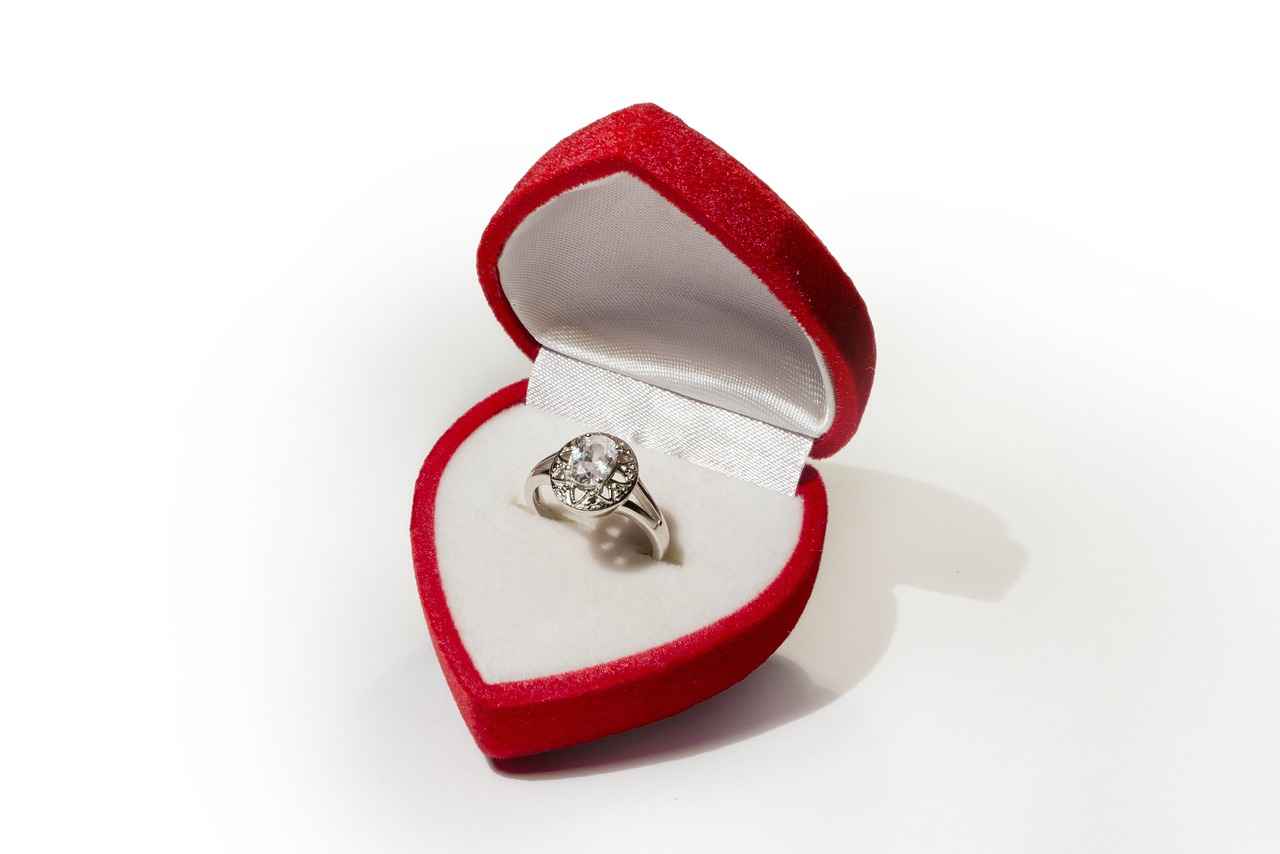
How to Select the Perfect Gemstone?
Choosing the ideal gemstone for an engagement ring is a deeply personal journey that can significantly influence the overall beauty and meaning of the piece. While diamonds have long been the traditional choice, the world of gemstones offers a vibrant array of options that can uniquely reflect your partner’s personality and your shared story. This article will guide you through the essential aspects of selecting the perfect gemstone for your custom engagement ring.
The choice of gemstone not only affects the aesthetic appeal of the ring but also carries personal significance. Many couples opt for gemstones that resonate with their love story or symbolize important milestones in their relationship. For instance, a sapphire might represent wisdom and loyalty, while an emerald signifies rebirth and love.
- Diamonds: The classic choice, known for their brilliance and durability.
- Sapphires: Available in various colors, sapphires are prized for their hardness and rich hues.
- Emeralds: Known for their stunning green color, emeralds symbolize growth and harmony.
- Rubies: Representing passion and love, rubies are a bold choice for those wanting to make a statement.
- Amethysts: A more affordable option, amethysts are known for their beautiful purple shades.
When selecting a gemstone, consider the color that resonates most with your partner. Each color carries its own meaning and can evoke different emotions. For example, blue sapphires are often associated with trust and loyalty, while pink sapphires can symbolize love and compassion. Additionally, think about the metal of the ring; certain gemstones complement specific metals beautifully.
Durability is a crucial factor when choosing a gemstone for an engagement ring. The Mohs scale rates gemstones based on their hardness. Diamonds rank the highest at a 10, making them extremely resistant to scratches. Sapphires and rubies follow closely behind at 9, while emeralds rank at 7. Understanding these ratings can help you select a gemstone that will withstand daily wear and tear.
The shape of the gemstone can dramatically influence the overall design of the ring. Popular shapes include round, princess, oval, and pear. Each shape can enhance the gemstone’s brilliance and create a unique look. For instance, a round cut maximizes sparkle, while an oval cut can create the illusion of a larger stone.
Choosing a gemstone that holds personal significance can transform the ring into a cherished symbol of your love. Consider incorporating birthstones, anniversary stones, or gemstones that represent shared experiences or values. This personal touch not only enhances the ring’s beauty but also deepens its emotional value.
The setting of the gemstone can also affect its appearance and security. Popular settings include solitaire, halo, and three-stone designs. Each setting highlights the gemstone in different ways, so it’s essential to choose one that complements the stone’s unique characteristics while ensuring it is securely held in place.
In conclusion, selecting the perfect gemstone for an engagement ring is a blend of personal preference, significance, and aesthetic appeal. By considering the factors discussed above, you can create a ring that not only represents your love but also stands the test of time.
What Are the 4 Cs of Diamonds?
When it comes to selecting the perfect diamond for an engagement ring, understanding the 4 Cs—cut, color, clarity, and carat weight—is essential. These factors not only influence the diamond’s appearance but also its value and how well it fits your budget and aesthetic preferences. Let’s delve deeper into each of these components to ensure you make an informed decision.
The cut of a diamond is arguably the most crucial factor affecting its brilliance and sparkle. It refers to how well the diamond has been shaped and faceted. A well-cut diamond reflects light beautifully, creating a mesmerizing display of brilliance. The cut grade ranges from Excellent to Poor, with higher grades resulting in a more stunning appearance. When choosing a diamond, prioritize the cut, as it can significantly enhance the overall visual appeal.
Diamond color is assessed on a scale from D (colorless) to Z (light yellow or brown). Colorless diamonds are the most sought after, as they allow light to pass through without interference, maximizing brilliance. However, slight color variations can be less noticeable in certain settings or when combined with colored gemstones. Understanding the color grade helps you select a diamond that aligns with your personal taste and budget.
Clarity refers to the presence of internal or external flaws, known as inclusions and blemishes, respectively. The clarity scale ranges from Flawless (no inclusions visible under 10x magnification) to Included (inclusions visible to the naked eye). While higher clarity grades can increase a diamond’s value, many inclusions are microscopic and do not significantly affect the overall beauty. Choosing a diamond with a clarity grade that suits your budget while still appearing visually appealing is key.
Carat weight measures the size of the diamond, with one carat equating to 0.2 grams. Larger diamonds are rarer and typically more expensive. However, it’s essential to balance carat weight with the other Cs. A well-cut, lower-carat diamond can appear larger and more brilliant than a poorly cut, higher-carat stone. Understanding how carat weight interacts with cut, color, and clarity will help you find the perfect diamond that meets your preferences.
When selecting a diamond, it’s crucial to consider how the 4 Cs interplay. For example, if you’re leaning towards a larger carat weight, you might choose a diamond with a slightly lower clarity or color grade to stay within your budget. Alternatively, if brilliance is your priority, you may opt for a smaller diamond with an excellent cut. Each choice will affect the overall look and feel of the ring, so take your time to assess what matters most to you.
To ensure you’re purchasing a quality diamond, always seek certification from a reputable grading laboratory, such as the GIA (Gemological Institute of America) or AGS (American Gem Society). This certification provides an unbiased assessment of the diamond’s 4 Cs and guarantees its authenticity. Additionally, work with a trusted jeweler who can guide you through the selection process, helping you find a diamond that meets your criteria.
Understanding the 4 Cs is essential in selecting a diamond that not only meets quality standards but also fits within your budget and aesthetic preferences. By taking the time to educate yourself on these key factors, you can confidently choose a diamond that symbolizes your love story.
How Do Colored Gemstones Compare to Diamonds?
Colored gemstones have emerged as a captivating alternative to traditional diamonds in engagement rings, offering couples a chance to express their unique love stories through personalized choices. Unlike diamonds, which have long been associated with classic elegance, colored gemstones provide a vibrant spectrum of hues, each carrying its own symbolism and characteristics. This article delves into the reasons why colored gemstones are not just a trend but a meaningful choice for custom designs.
Each colored gemstone possesses distinct qualities that can resonate with individual preferences. For instance, rubies symbolize passion and love, making them a fiery choice for those wanting to convey deep emotions. Sapphires, often associated with wisdom and nobility, offer a regal touch, while emeralds represent rebirth and growth, ideal for couples who value renewal in their relationship. This rich tapestry of meanings allows couples to select a gemstone that truly reflects their journey together.
The versatility of colored gemstones allows for endless creativity in ring design. When paired with various metal settings such as white gold, yellow gold, or rose gold, these gemstones can create striking contrasts or harmonious blends that enhance their natural beauty. For example, a vibrant pink tourmaline set in yellow gold can create a warm and inviting aesthetic, while a deep blue sapphire can pop against a sleek white gold band.
In general, colored gemstones tend to be more affordable than diamonds, making them an attractive option for budget-conscious couples. The pricing of gemstones varies significantly based on their rarity, size, and quality. While high-quality colored gemstones can still command high prices, many options are available that allow couples to stay within their budget without sacrificing beauty or significance.
- Color: The color of the gemstone should resonate with the wearer’s personal style. Consider the various shades and intensities available.
- Durability: Some gemstones are softer than diamonds and may require more care. For example, opal is beautiful but more prone to scratches than a diamond.
- Symbolism: Think about the meaning behind the gemstone. Choosing one that represents a significant aspect of your relationship can add sentimental value.
Caring for colored gemstone rings involves gentle cleaning methods to preserve their beauty. Regularly wiping the ring with a soft cloth can help remove dirt and oils. It’s also advisable to avoid exposing the gemstone to harsh chemicals or extreme temperatures, which can damage its surface or alter its color.
Absolutely! Many couples choose to incorporate diamonds alongside colored gemstones to create a stunning contrast. This combination not only enhances the overall design but also allows for a unique blend of traditional and modern aesthetics. A diamond halo around a central colored gemstone can elevate the ring’s visual impact, creating a dazzling effect that draws the eye.
In conclusion, colored gemstones offer a vibrant, personalized alternative to diamonds, each with its unique characteristics and meanings. By carefully considering factors such as color, durability, and symbolism, couples can design a custom engagement ring that truly reflects their love story, making it a cherished piece for years to come.

What Ring Styles Should You Consider?
When it comes to choosing an engagement ring, one of the most exciting aspects is selecting the style that resonates with your partner’s personality and preferences. The style of the engagement ring can range from vintage to modern, each conveying different meanings and allowing for personal expression.
Understanding the various styles available is essential in making an informed choice. Below are some popular styles that you might consider:
- Vintage Engagement Rings: Vintage rings often showcase intricate designs, including filigree and unique settings. These rings can be a beautiful nod to history, often featuring antique diamonds or colored gemstones. Vintage styles can symbolize a sense of timelessness and tradition, making them perfect for couples who appreciate classic aesthetics.
- Modern Engagement Rings: Modern rings typically embrace minimalism with clean lines and innovative designs. These rings often incorporate unique settings, such as tension or bezel settings, and can feature unconventional gemstones. A modern ring can reflect a couple’s desire for something unique and contemporary.
- Art Deco Rings: Characterized by bold geometric shapes and vibrant colors, Art Deco rings are a perfect blend of vintage and modern styles. They often feature symmetrical designs and can include both diamonds and colored stones, appealing to those who appreciate the glamour of the 1920s and 30s.
- Halo Engagement Rings: Halo settings consist of a central stone surrounded by smaller stones, creating a stunning visual effect. This style enhances the overall sparkle and can make the center stone appear larger. Halo rings can be designed in both vintage and modern styles, making them versatile.
- Solitaire Engagement Rings: The classic solitaire ring features a single stone, emphasizing its beauty and brilliance. This style is timeless and can be tailored with various metal types and stone shapes, catering to both traditional and modern tastes.
Each engagement ring style tells a story and can be tailored to suit individual tastes and lifestyles. For instance, a couple who values heritage may lean towards a vintage design, while those with a modern aesthetic might prefer a sleek, minimalist look. Understanding the symbolism behind each style can help you choose a ring that resonates with your partner’s personality.
Opting for a custom engagement ring allows for complete personalization. You can combine elements from different styles to create something that is truly unique. This customization ensures that the ring not only reflects your partner’s taste but also symbolizes your unique love story. Collaborating with a jeweler can help in blending various styles and features to achieve the perfect design.
When choosing an engagement ring style, consider your partner’s lifestyle. For someone who leads an active life, a simpler design with a lower profile may be more practical. On the other hand, if your partner enjoys dressing up and attending events, a more elaborate ring might be suitable. Always keep in mind their daily activities and preferences.
In conclusion, selecting the right engagement ring style involves understanding the various options available, considering personal tastes, and ensuring it aligns with your partner’s lifestyle. Whether you choose a vintage, modern, or custom design, the perfect ring will symbolize your love and commitment.
What Defines a Vintage Engagement Ring?
When it comes to engagement rings, few styles capture the imagination quite like vintage engagement rings. These rings often showcase intricate designs and unique settings that reflect the artistry of the era they represent. They serve as a beautiful nod to history and tradition, making them a popular choice for couples seeking something distinct and meaningful.
Vintage engagement rings are defined by their timeless elegance and meticulous craftsmanship. Each piece tells a story, often influenced by the cultural and artistic movements of its time. From the ornate filigree of the Edwardian era to the bold geometric shapes of the Art Deco period, these rings offer a glimpse into the past.
- Intricate Designs: Vintage rings often feature detailed engravings, milgrain edges, and unique settings that are not commonly found in modern designs.
- Unique Gemstone Settings: Many vintage rings utilize colored gemstones or diamonds in unusual cuts, adding to their individuality.
- Historical Significance: Each vintage ring carries a piece of history, often reflecting the trends and styles of its time.
Opting for a vintage engagement ring allows couples to express their individuality while honoring the past. These rings can be a symbol of enduring love and a connection to family heritage. Additionally, vintage rings are often more affordable than their modern counterparts, offering exceptional value for their unique charm.
When searching for a vintage engagement ring, consider the following tips:
- Research Different Eras: Familiarize yourself with the characteristics of various vintage styles to find one that resonates with your aesthetic.
- Choose a Reputable Dealer: Look for jewelers who specialize in vintage jewelry and can provide a history of the piece.
- Inspect the Ring: Ensure the ring is in good condition, and check for any signs of wear or damage that may require repair.
Before making a purchase, keep the following factors in mind:
- Authenticity: Verify the ring’s authenticity and ensure it is an original vintage piece rather than a reproduction.
- Size and Fit: Vintage rings may not conform to modern sizing standards, so be prepared for resizing if necessary.
- Style Preferences: Consider your partner’s taste and lifestyle to ensure the ring will be worn and cherished.
Proper care is essential to maintain the beauty of a vintage engagement ring. Here are some tips:
- Regular Cleaning: Clean your ring regularly with a soft cloth and mild soap to remove dirt and oils.
- Avoid Harsh Chemicals: Keep your ring away from harsh chemicals that could damage the metal or stones.
- Professional Maintenance: Consider having your ring professionally inspected and cleaned periodically to ensure its longevity.
In conclusion, vintage engagement rings offer a unique blend of history, artistry, and personal significance. With their intricate designs and rich stories, they can be a perfect choice for couples looking to celebrate their love with a ring that is as unique as their relationship.
How Does a Modern Ring Differ from Traditional Designs?
When it comes to engagement rings, the choice between modern and traditional designs can significantly influence the overall aesthetic and emotional significance of the piece. Modern engagement rings are characterized by their minimalistic style and clean lines, representing a contemporary approach to a timeless symbol of love. This article delves into the key differences between modern and traditional designs, highlighting the unique features that set them apart.
Modern engagement rings typically embrace minimalism and clean lines, offering a fresh perspective on classic styles. They often incorporate unique settings and innovative designs that allow them to stand out. For instance, many modern rings feature geometric shapes and asymmetrical designs that break away from conventional aesthetics. This trend reflects a broader movement towards individuality and personalization in jewelry choices.
One of the most significant aspects of modern engagement rings is their setting. Unlike traditional designs that often utilize prong settings, many contemporary rings feature bezel or tension settings, which provide a sleek and sophisticated look. These settings not only enhance the visual appeal but also offer added security for the gemstone, making them practical as well as stylish.
While diamonds remain a popular choice for engagement rings, modern designs often incorporate a variety of gemstones, such as sapphires, emeralds, and even morganite. These colored stones can add a unique touch and personal significance, allowing couples to express their individuality. The choice of gemstone can reflect personal stories, heritage, or simply a preference for color.
When selecting a metal for a modern engagement ring, couples often gravitate towards white gold, rose gold, and platinum. Each of these metals offers a distinct look and feel, contributing to the overall vibe of the ring. For instance, rose gold provides a romantic and vintage appeal, while platinum offers durability and a luxurious finish. The choice of metal can also influence the ring’s maintenance and longevity.
Customization is a hallmark of modern engagement rings. Couples can work with jewelers to create a piece that reflects their unique style and story. This process often involves selecting the setting, metal, and gemstone, along with any special engravings or design elements that hold personal meaning. Such customization ensures that the ring is not only beautiful but also deeply personal.
Current trends in modern engagement rings often lean towards sustainability and ethical sourcing. Many couples are now prioritizing conflict-free diamonds and recycled materials, which align with their values. This shift towards ethical considerations in jewelry design is a testament to the evolving nature of love and commitment in contemporary society.
Choosing a modern engagement ring comes with several advantages. The emphasis on minimalism often results in a timeless piece that can be worn daily without overwhelming the wearer. Additionally, the innovative designs and unique settings can create a more personalized representation of love, making the ring a true reflection of the couple’s journey together.
In conclusion, modern engagement rings offer a distinct departure from traditional designs, prioritizing minimalism, personalization, and innovative aesthetics. By understanding these differences, couples can make informed decisions that resonate with their unique love story.
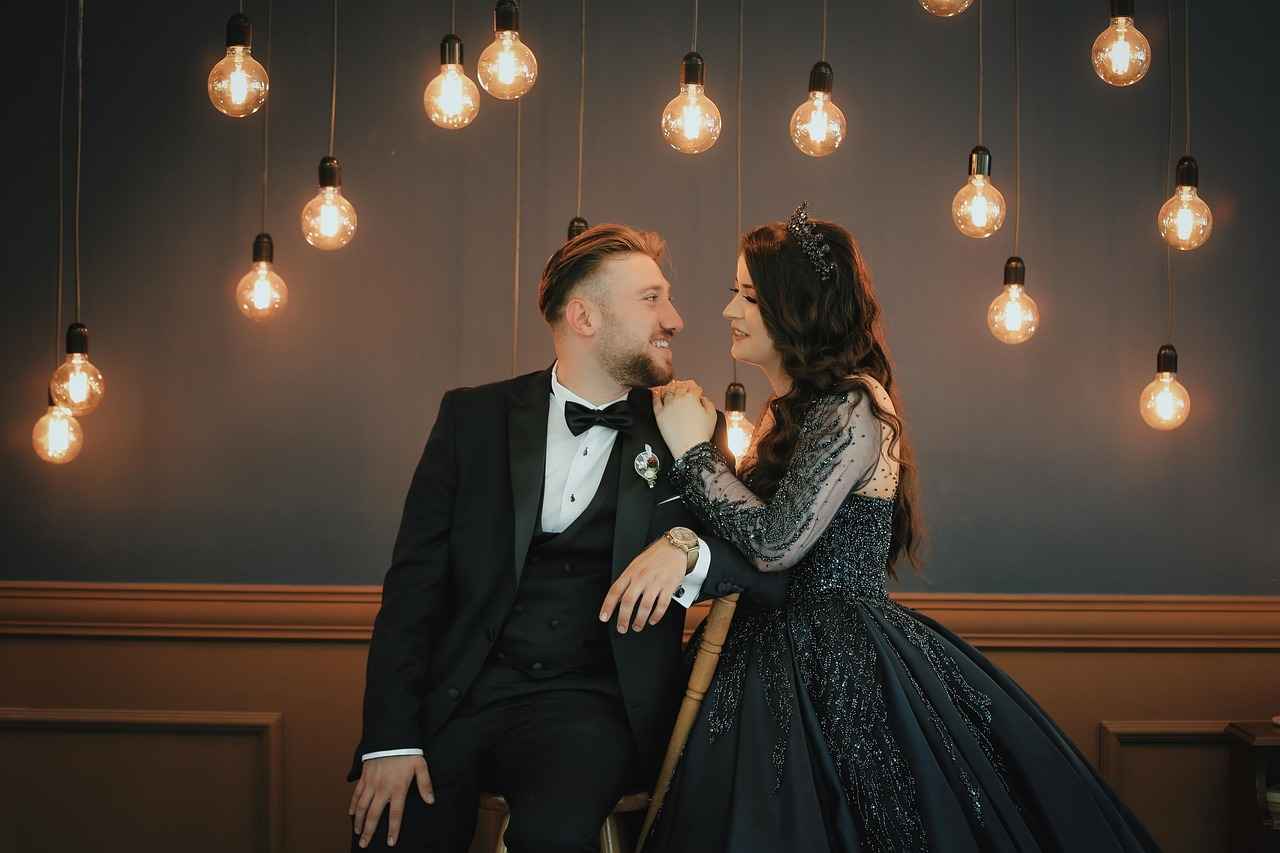
How to Customize Your Ring Design?
Customizing a ring is an exciting journey that allows you to create a piece of jewelry that truly represents your love story. This process not only involves collaboration with a skilled jeweler but also requires a deep understanding of your partner’s style and preferences. Here’s a comprehensive guide on how to effectively customize your ring design.
The customization process typically begins with a consultation with your jeweler. This is where you can discuss your ideas and vision. The jeweler will help translate your thoughts into tangible designs. The steps include:
- Brainstorming Ideas: Consider your partner’s style, favorite colors, and any particular symbols that hold significance.
- Sketching Designs: Collaborate with the jeweler to create initial sketches. This visual representation will help refine your ideas.
- Selecting Materials: Choose from a variety of metals and gemstones. Each material has unique properties and aesthetics.
- Finalizing Details: Discuss the specifics such as ring size, setting type, and any additional features like engravings.
A jeweler plays a crucial role in the customization process. They bring expertise and experience, guiding you through the various options available. A skilled jeweler can:
- Offer Insights: Provide recommendations based on current trends and traditional practices.
- Ensure Quality: Help you select high-quality materials that will stand the test of time.
- Translate Your Vision: Turn your ideas into a practical design that aligns with your budget.
The choice of gemstone is one of the most significant decisions in customizing your ring. While diamonds are the classic choice, consider the following:
- Symbolism: Different gemstones carry unique meanings. For example, sapphires symbolize loyalty, while emeralds represent rebirth.
- Color Preferences: Choose a gemstone that complements your partner’s style and wardrobe.
- Durability: Consider the hardness of the gemstone, especially if your partner leads an active lifestyle.
To make the ring truly unique, consider incorporating personal touches such as:
- Engravings: A meaningful date or phrase can add sentimental value.
- Unique Settings: Explore different settings that can showcase the gemstone in a distinctive way.
- Mixing Metals: Combining different metals can create a unique look that reflects your partner’s personality.
Customizing a ring can vary significantly in cost. Here are some tips to manage your budget:
- Set a Clear Budget: Determine how much you are willing to spend before starting the design process.
- Prioritize Elements: Decide which aspects are most important to you, whether it’s the gemstone, metal, or design complexity.
- Communicate with Your Jeweler: Be open about your budget so they can help you make choices that fit within your financial plan.
In conclusion, customizing a ring is a rewarding experience that combines creativity, personal expression, and collaboration with a jeweler. By following these steps and considering the essential elements, you can design a ring that not only captures your vision but also celebrates your unique love story.
What Role Does a Jeweler Play in Custom Design?
When embarking on the journey of designing a custom engagement ring, the role of a skilled jeweler cannot be overstated. A jeweler is not merely a craftsman; they are your partner in creating a unique piece that encapsulates your love story and personal style. Their expertise is invaluable in navigating the myriad choices available, ensuring that every aspect of the ring aligns with your vision.
A jeweler acts as a trusted guide throughout the design process. They begin by understanding your preferences, lifestyle, and budget. This initial consultation is crucial as it sets the foundation for the entire project. By asking insightful questions, a jeweler can uncover your partner’s style and preferences, which may not always be obvious. For instance, do they prefer classic designs or something more modern? Are they drawn to specific gemstones or metals?
Jewelry design is not just about aesthetics; it also involves a deep understanding of materials. A skilled jeweler will educate you on various metals such as gold, platinum, and silver, explaining their properties and how they influence the ring’s durability and appearance. They will also inform you about different types of gemstones, including diamonds and colored stones, helping you understand their qualities, such as the 4 Cs—cut, color, clarity, and carat weight.
The process of designing a custom ring is a collaborative effort. A jeweler will offer suggestions based on their experience while respecting your ideas and desires. They can help you visualize the final product through sketches or 3D models, allowing for adjustments before the actual creation begins. This collaborative approach ensures that the final design is a true reflection of your vision.
Attention to detail is another critical aspect of a jeweler’s role. They will meticulously consider every element of the ring, from the setting and the arrangement of stones to the finish and polish. This level of detail ensures that the ring is not only beautiful but also comfortable to wear. A jeweler will also discuss practical considerations, such as how the ring will withstand daily wear, ensuring it remains as stunning as the day it was created.
Jewelry trends can change rapidly, but a skilled jeweler will help you balance current trends with timeless elegance. They can guide you in selecting designs that will remain stylish for years to come, ensuring that your engagement ring is not just a fleeting fashion statement but a cherished heirloom.
Ultimately, the jeweler’s goal is to ensure that the final product aligns perfectly with your vision. They will conduct quality checks throughout the process, ensuring that the craftsmanship meets high standards. Once the ring is complete, a jeweler will present it to you, often with a sense of pride, knowing they have helped bring your dream to life.
In conclusion, the role of a jeweler in custom design is multifaceted and essential. From being a supportive guide to providing expert insights, their involvement can make the difference between a standard ring and a truly personalized piece. By collaborating closely with a jeweler, you can create an engagement ring that not only symbolizes your love but also tells your unique story.
How Can You Incorporate Personal Touches into the Design?
When it comes to creating a custom engagement ring, the journey is as significant as the final product. One of the most impactful ways to make your ring truly unique is by incorporating personal touches. These elements not only enhance the ring’s aesthetic appeal but also serve as a testament to your relationship’s story.
Personal touches can transform a standard ring into a one-of-a-kind masterpiece. They allow you to infuse your personality, values, and shared experiences into the design. This makes the ring not just a piece of jewelry, but a cherished symbol of your love.
- Engravings: Adding a meaningful quote, date, or initials inside the band can create a hidden message that only you and your partner know.
- Unique Settings: Opting for a distinctive setting style, such as a halo or bezel, can set your ring apart. Consider shapes and designs that resonate with your partner’s taste.
- Custom Gemstones: Instead of a traditional diamond, consider using a gemstone that holds significance for both of you, such as a birthstone or a favorite color.
- Symbolic Elements: Incorporate symbols that represent your relationship, like hearts, infinity signs, or other motifs that hold special meaning.
Engravings are a powerful way to convey emotion. They can be as simple as a date that marks a significant milestone in your relationship or as elaborate as a line from your favorite song. The beauty of engravings lies in their ability to evoke memories and feelings, making the ring a constant reminder of your love story.
Choosing a unique setting can dramatically alter the ring’s appearance. For example, a vintage-inspired setting may evoke a sense of nostalgia, while a modern design can reflect contemporary tastes. By selecting a setting that aligns with your partner’s style, you create a ring that feels personal and tailored.
Custom gemstones offer a vibrant alternative to traditional diamonds. They can symbolize various aspects of your relationship, such as loyalty, love, or friendship. For instance, a sapphire may represent wisdom, while an emerald signifies rebirth. Choosing a gemstone that resonates with your shared experiences adds depth to the ring’s significance.
Incorporating symbolic elements into the ring design can enhance its meaning. For instance, using a heart shape in the band or setting can represent love, while infinity symbols can signify an everlasting bond. These elements serve as constant reminders of your commitment and shared journey.
Working closely with a jeweler is crucial for bringing your vision to life. Share your ideas and inspirations, and don’t hesitate to ask for their expertise. A skilled jeweler can help you explore various personalization options, ensuring that the final design reflects your unique love story.
In conclusion, incorporating personal touches into the design of your engagement ring is a meaningful way to celebrate your relationship. From engravings to unique settings, each element can enhance the ring’s sentimental value, making it a cherished symbol of your love.
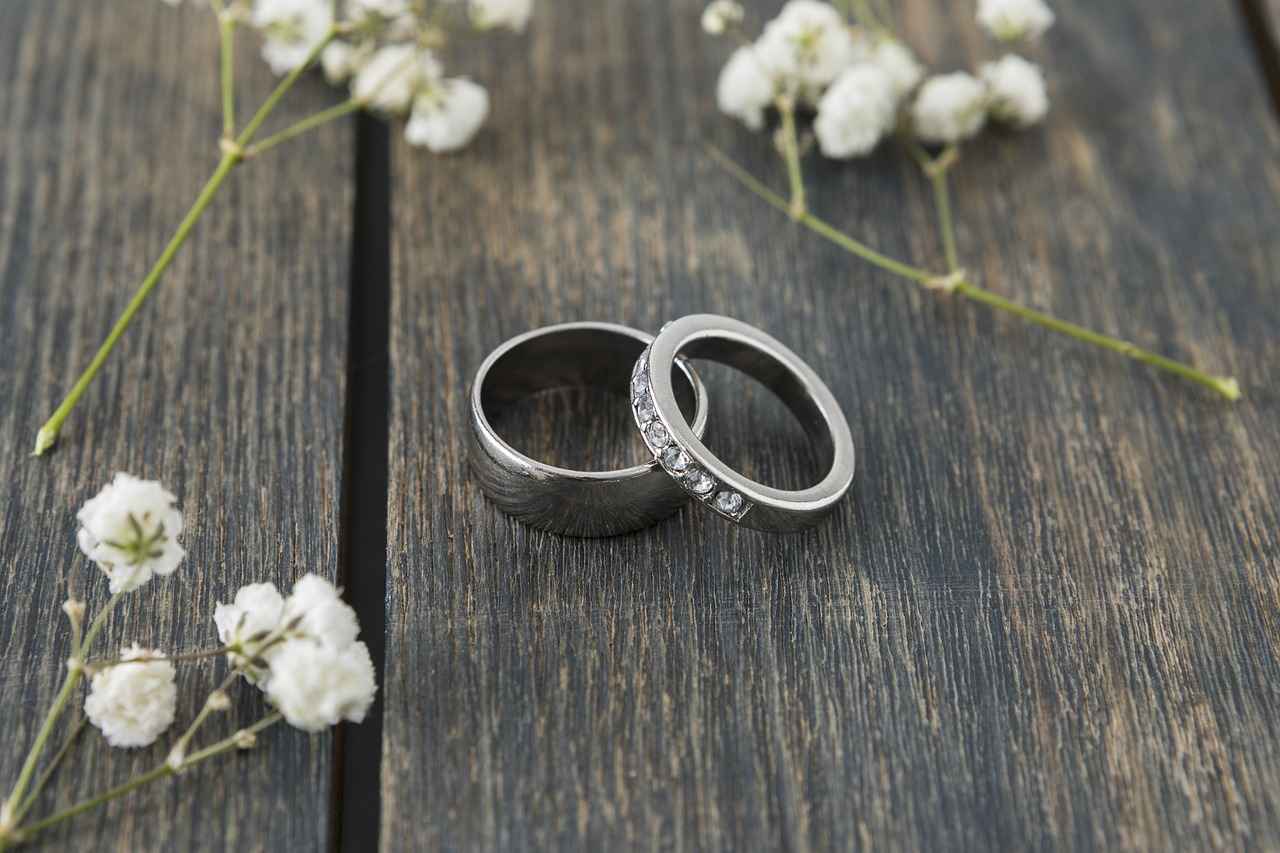
What Are the Costs Associated with Custom Engagement Rings?
When embarking on the journey of designing a custom engagement ring, it is essential to have a clear understanding of the costs involved. This knowledge not only helps in managing expectations but also ensures that your budget aligns with your vision. Several factors play a crucial role in determining the overall price of the ring, including the choice of materials, the complexity of the design, and the labor involved in crafting the piece.
The materials selected for your engagement ring significantly influence its price. Precious metals such as gold (white, yellow, or rose) and platinum vary in cost. For example, platinum is generally more expensive due to its rarity and durability. Additionally, the choice of gemstones can greatly impact the overall cost. Diamonds are traditionally the most expensive option, but colored gemstones like sapphires or emeralds can provide a unique and often more affordable alternative.
The complexity of the ring’s design is another crucial factor affecting costs. Intricate designs that involve detailed craftsmanship or unique settings may require more time and skill, leading to higher labor costs. Simple, classic designs typically cost less due to the reduced amount of labor involved. When discussing your vision with a jeweler, be sure to consider how design elements like engraving or custom settings may add to the overall expense.
Labor costs can vary widely based on the jeweler’s experience and skill level. A highly skilled artisan may charge more, but their expertise can ensure a higher quality finished product. It’s important to find a balance between cost and quality when selecting a jeweler. Always ask about the jeweler’s qualifications and previous work to ensure you are making a sound investment.
In addition to materials and labor, there are other costs to keep in mind. For instance, insurance for the ring is often recommended to protect your investment. Furthermore, if you plan to have the ring appraised, this can incur additional fees. Don’t forget to factor in the cost of any customization options you may want, such as adding personal engravings or selecting a unique gemstone cut.
To budget effectively for a custom engagement ring, start by determining a clear financial limit. This will help narrow down your options and prevent overspending. Create a list of your must-haves versus nice-to-haves, allowing you to prioritize your spending. Consulting with a jeweler early in the process can also provide insights into what is feasible within your budget.
When designing a custom engagement ring, it’s easy to make mistakes that can lead to dissatisfaction or overspending. One common pitfall is rushing through the design process. Take the time to thoroughly discuss your vision and preferences with your jeweler. Another mistake is neglecting the importance of comfort; ensure the ring fits well and is comfortable for everyday wear. Lastly, be wary of trends that may not stand the test of time; focus on creating a timeless piece that reflects your unique love story.
How Can You Budget for a Custom Ring?
Designing a custom engagement ring is an exciting journey that allows you to create a piece that symbolizes your unique love story. However, one of the most crucial steps in this process is budgeting. Understanding how to effectively allocate your finances can help you achieve your dream ring without breaking the bank.
Budgeting for a custom ring is essential because it sets the framework for your choices. A well-defined budget helps you prioritize aspects of the design, ensuring that you focus on what matters most without the risk of overspending. It also helps you avoid the stress of financial strain that can come from unexpected costs.
- Materials: The choice of materials significantly impacts the overall cost. Precious metals like platinum and gold vary in price, and the type of gemstone you select can also affect your budget.
- Craftsmanship: Custom designs often require more labor than mass-produced rings, so consider the jeweler’s expertise and the complexity of your design.
- Design Features: Unique elements such as intricate settings or custom engravings can add to the cost, so it’s essential to determine which features are most important to you.
Start by determining your maximum spending limit. Consider factors like your income, savings, and any other financial commitments. A common guideline is to spend two to three months’ salary, but it’s crucial to choose a figure that feels comfortable for you.
- Research: Investigate different materials and gemstones to understand their price ranges. This knowledge will empower you to make informed decisions.
- Communicate with Your Jeweler: Share your budget with your jeweler upfront. A good jeweler will work within your constraints and suggest alternatives that maintain the integrity of your design.
- Be Flexible: Sometimes, you may need to compromise on certain aspects to stay within budget. For example, opting for a slightly smaller diamond or a different metal can yield significant savings.
Many people fall into the trap of underestimating costs or failing to account for additional expenses, such as insurance and maintenance. To avoid this, create a comprehensive list of potential costs associated with the ring and include a buffer for unexpected expenses. Additionally, be wary of the allure of trends that may drive up costs unnecessarily.
If you find that your desired design exceeds your budget, don’t panic. Take a step back and reassess your priorities. Consider simplifying the design, opting for a less expensive stone, or even delaying your purchase until you can afford your dream ring. Remember, the perfect ring is one that reflects your love, not just a price tag.
In conclusion, budgeting for a custom engagement ring is a vital step that requires careful planning and consideration. By understanding the factors that influence costs and setting a realistic budget, you can create a beautiful ring that symbolizes your commitment without financial strain. Embrace the process, and enjoy crafting a piece that will be cherished for a lifetime.
What Are Common Mistakes to Avoid When Designing a Ring?
Designing a custom engagement ring is an exciting journey, but it can also be fraught with challenges. To ensure a smooth process and a stunning final product, it’s essential to be aware of common mistakes that can derail your vision. This section will explore these pitfalls and offer valuable insights to help you create a ring that perfectly symbolizes your love story.
One of the most significant mistakes people make when designing an engagement ring is rushing decisions. The excitement of creating something unique can lead to hasty choices, which may not align with your partner’s preferences or your vision. Taking the time to explore different options and gather feedback is crucial. This approach not only enhances the design process but also ensures that the final ring is a thoughtful representation of your relationship.
Another common oversight is neglecting comfort. While aesthetics are essential, the ring should also be comfortable for daily wear. Consider factors such as the ring’s width, the setting’s height, and the overall weight. A ring that looks beautiful but feels uncomfortable will likely be left unworn. Engage with your jeweler to find a balance between style and comfort, ensuring that your partner will cherish the ring for years to come.
Failing to establish a clear budget can lead to disappointment. Understanding the costs involved in crafting a custom ring is vital. This includes the materials, labor, and any additional features you may want to incorporate. By setting a budget upfront, you can make informed choices and avoid the temptation to overspend. Remember, a beautiful ring doesn’t have to break the bank; it’s about finding the right balance between quality and affordability.
Many people overlook the importance of thorough research on gemstones. Each gemstone has its unique properties, symbolism, and care requirements. Understanding these elements can help you choose a stone that resonates with your partner’s personality and lifestyle. For instance, while diamonds are traditional, colored gemstones can offer a personal touch. Take the time to explore various options and consider their significance to make a meaningful choice.
Effective communication with your jeweler is key to avoiding misunderstandings. Many people assume that their vision will be perfectly understood without thorough discussions. Regularly sharing your ideas, preferences, and concerns can prevent misalignment and ensure that the final design reflects your expectations. Don’t hesitate to ask questions or request adjustments during the design process; a good jeweler will appreciate your input and work collaboratively with you.
Choosing the wrong ring style is another common mistake. Each style carries different meanings and aesthetics, and it’s essential to select one that resonates with both you and your partner. Whether you’re drawn to vintage, modern, or something entirely unique, ensure that the style reflects your partner’s taste and lifestyle. If unsure, consider involving them in the selection process or seeking their input to avoid any regrets.
By being aware of these common mistakes and taking the time to address them, you can enhance your design process significantly. This thoughtful approach will lead to a custom engagement ring that not only looks beautiful but also holds deep meaning and significance for both you and your partner.
Frequently Asked Questions
- What are the key elements to consider when designing a custom engagement ring?
When designing a custom engagement ring, focus on the setting, metal type, and gemstone. Each element plays a crucial role in the ring’s overall look and feel, ensuring it reflects your unique love story.
- How do I choose the right metal for my engagement ring?
Selecting the right metal is essential for both durability and style. Options like white gold, yellow gold, rose gold, and platinum each offer distinct advantages, so consider what matches your partner’s taste best.
- What are the 4 Cs of diamonds?
The 4 Cs stand for cut, color, clarity, and carat weight. Understanding these factors is crucial in selecting a diamond that meets quality standards while fitting your budget and aesthetic preferences.
- How can I incorporate personal touches into the ring design?
Personal touches can make the ring truly special. Consider adding engraving or unique settings that symbolize your relationship, enhancing its sentimental value and making it one-of-a-kind.
- What are common mistakes to avoid when designing a custom engagement ring?
Common pitfalls include rushing decisions or neglecting comfort. Take your time to consider all aspects of the design process to ensure a thoughtful and meaningful result that your partner will cherish.

